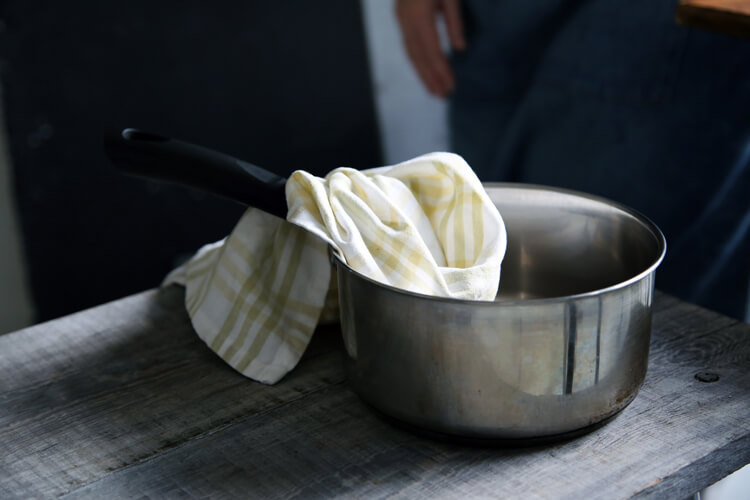What is Borax?
Borax, or sodium tetraborate, is a natural white mineral and salt powder compound derived from boron, a non-metal element which is mined from the ground (generally from dried-up lake beds).
Boron is an essential mineral that plants need to grow and the human body utilizes for bone, immune, and brain function.
Where Do Most Brands Source Their Borax?
Aptly named, Boron, California maintains the largest borax mine in the world, which has quite the reputation for being one of the most ecologically-benign and environmentally-sustainable mines in the United States. This same mine just happens to be the source for one of the most popular borax brands: 20 Mule Team. While the source of each brand may vary, it’s a good bet that the majority of American-based borax products are sourced from this same mine.
How Dangerous is Borax?
Contrary to misleading opinions based on the misinterpretation of scholarly articles, borax is not boric acid. Boric acid (sodium borate) is a potentially-harmful substance that results when borax reacts with another acid, such as sulfuric or hydrochloric acid.
The Material Safety Data Sheet considers borax a health hazard level 1, which ranks it alongside baking soda and salt.
Unlike boric acid, borox is extremely alkaline (9.3 pH) and, as it is with most substances that go beyond the pH range of human skin, it can cause mild irritation to already damaged skin and is a mild irritant to mucous membranes (i.e. eyes, lungs, genitals, other innards). However, it does not penetrate skin easily and its bio-accumulative effect is reportedly non-existent. (Meaning: repetitive topical use does not cause a build-up of borax in the system.)
Borax has also been ruled out as a carcinogen.
The only perceived danger is from high-quantity ingestion. Several studies conducted on rats concluded that 1. Moderate ingestion causes gastrointestinal distress, such as nausea and diarrhea, and 2. Incredibly high-quantity ingestion causes systematic toxicity. (Note: A disruption of the sexual reproductive system from high levels of long-term ingestion is reported in these same studies on rats.)
In short, don’t eat it, rub it in your eyes, or include it in your bedroom activities.
What is Borax Used For?
Borax is a common ingredient in detergents and cosmetics. It is prized for its effectiveness as a cleanser and deodorizer.
Does Borax Kill Mold?
And then some. Borax is helpful as a mold killer. The main purpose it is being mentioned here on MoldBlogger is because of its natural anti-fungal properties. Borax is a formidable foe when it comes to fungi, as well as bacteria and insects.
What Are the Advantages to Using Borax in DIY Cleaning Products?
- Borax is one of the most effective mold-killing compounds.
- Borax is non-toxic, does not emit harmful gases, and is significantly safer than commercial “mold-removing” products.
- Borax has an economically-friendly price and can be used not only as a detergent and all-purpose cleaner, but also as an insecticide.
- Unlike other products, such as bleach, borax is not harmful to the environment.
- Borax can be safely mixed with other substances, except for sulfuric and hydrochloric acids.
What is a No-Fuss Method for Removing Mold With Borax?
-
- Mix borax with water. Use a ratio of one cup of borax with one gallon of water—that’s a 1 to 16 ratio of borax to water. To be certain the borax completely dissolves, use hot water.*
- Apply the solution to the moldy area. Allow it to sit for a few minutes.
- Wipe the affected area with a cloth, disposable sponge, or scrub brush.
- Unless the area is unsightly, do not rinse afterwards. The borax will prevent the mold from returning and inhibit the growth of new mold spores.
*If you prefer, the borax and water solution can be poured into a glass spray bottle. Or, to avoid supplying excess moisture to the more porous materials affected by mold, such as dry wall or unfinished wood, a paste can be made by adding less water to the mixture.
Article by Amanda Demsky


6 comments
HI – My house is currently down to studs due to remediation for water damage/mold/asbestos. I plan to have the wood studs sprayed with borate for termites while the studs are accessible, but am wondering if this will interfere with the mycotoxin testing to be done after the stucco is replaced?
Your claim that borax is free of chemicals is bogus.
Borax IS A CHEMICAL.
Hey Reid,
The article gives its chemical element composition as l compound.
Of course it’s a chemical.
It’s not toxic
Learn to read.
She specifically says “borax is chemical free”. Borax is sodium tetraborate. It’s a chemical in it’s own right.
Thank you for bringing this to our attention. We have updated the article.
How often would this solution have to be applied, for example, on an outdoor rock porch that gets black mold from rain? Maintenance application every few months??